You have an innovative idea for a product or service that could solve a real customer problem or pain point? Or you want to expand your existing business by offering online orders and deliveries? It has never been easier to start an online business than it is today. Tools are more accessible than ever. Softwares are convenient and easy to use. And best of all, you can set up your online business from the comfort of your home.
22%
Of global retail sales will take place online by 2023
This guide will show you exactly how to start your online business today. You’ll learn what the most successful Internet businesses do to launch and grow online.
The article is organised into four distinct steps to help you focus on what matters most at each phase of your business. You’ll discover the tools and platforms that will have a real impact on your growth, so you can focus on what’s most important to you, step by step.
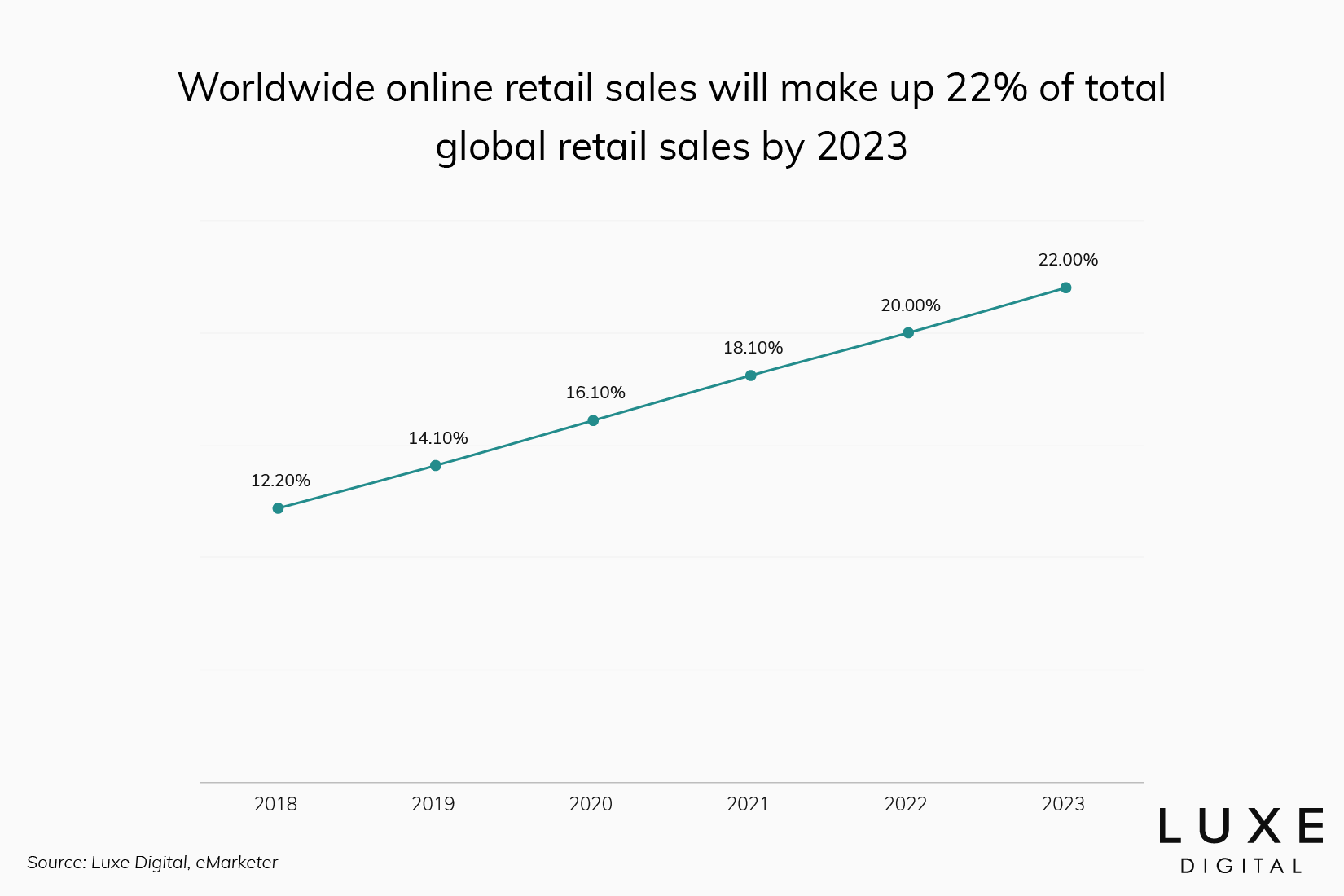
Ready to see how to start your online business? The most successful online businesses follow these four steps to get started:
- Plan your online business
- Launch your online business
- Grow your online business
- Retain and delight your customers
To help you be as successful as possible, our team also included two bonus sections after the guide to estimate how much money you need to start an online business and answers to the most frequently asked questions related to starting an online business.
This guide is part of a series on online business and digital transformation.
Our objective is to help business owners transform their brick and mortar business to sell online with a roadmap to launch, the right questions to ask, and case studies to find inspiring success stories.
We also want to help anyone start an online business today by explaining how you can make money online, sharing ideas and inspiration, and talking you through a step by step guide to launch your online business.
Step 1: Plan your online business
Every journey starts with a roadmap. The same applies to starting your online business. Because a great idea alone isn’t enough, you will need strong and sustainable foundations to succeed online.
In this first step to launching your digital business, you will see exactly how to create a simple yet impactful business plan and how to articulate your brand values to succeed.
Start with a business plan: What’s your strategy?
A business plan is the first step to launching a successful brand online. Entrepreneurs who skip this important step often face significant problems further down the line. To avoid challenges that could have been easily anticipated, you simply need to invest a bit of time before launching your product or service to create a business plan.
Your business plan doesn’t need to be complicated or lengthy. In fact, simple and concise business plans are best as they are easier to follow. Simple doesn’t mean easy, however. Here’s how you should proceed when creating your first business plan.
Why is it important?
A business plan will help you understand the market potential, identify opportunities and challenges, define the appropriate product pricing strategy, and prioritise every step that follows.
How to use your business plan?
After completing your business plan, you’ll have an actionable roadmap to launch your brand online. Your business plan should also include important milestones to help you evaluate success against your goals.
What should be included in your online business plan?
To be useful, your business plan should include the following sections:
- Business overview: What will be the nature of your business? How will you structure your organisation? What is your vision for the future and what are the measurable objectives that you want to achieve over the coming months and years?
- Market analysis: What is the total size of the market you want to penetrate? Who will be your main competitors and how are they doing? What are the key opportunities and challenges that you will face when launching a new product in that market?
- Elevator pitch: How will you introduce your products or services to potential customers or investors?
- Customers segmentation: Brands succeed online when they are customer-centric. It is critical to clearly define who your customers are and why your product will be relevant to them.
- Marketing plan: Launching a product or service online is great. Being able to captivate potential buyers and make a profit is even better. Your marketing plan should clearly articulate how you will introduce your product to your audience.
- Logistics and operations: This is the nuts and bolts of business operations. You need to figure out before your launch how you will source, produce, store, fulfil, and deliver your goods or services.
- Budget and finance: Finally, this last section should include your financial projections for the first few quarters of your business. How much money will you need to start? When will you become financially profitable? How will you ensure the sustainability of your business?
Tools to do it right:

To help you get started, ecommerce platform Shopify created a simple business plan template that you can download for free from their website. It is created especially to launch a brand online so you won’t have to waste time on areas that are irrelevant to ecommerce. You can download the free business plan template here.
Define your brand purpose: What makes you special?
Now that your business plan is completed, you should have a pretty good idea of the market potential for your product or service. You’re now ready to define your brand purpose.
Why is it important?
Your brand purpose will be the foundation of your online business. Why does your brand exist and why should consumers care? What will success look like for your brand? What are the key values that your brand will embody?
How to use your brand purpose?
Your brand purpose will be the angular stone to everything that you do thereafter. It will dictate how to position your brand in the market and how to articulate your marketing messages. It will also help you decide what to invest in when you’re ready to grow and explore new product categories or partnerships.
Step 2: Launch your online business
Now that your online business foundations are in place, it’s time to put your business plan into motion and launch your brand.
The second step focuses on setting up your business operations, designing your brand experience, and launching your online store.
For most people, setting up business operations is a tedious thing to do. You might be tempted to skip it at the beginning because you haven’t even sold anything yet and it will be easy to keep track of a few sales manually at the beginning. Don’t!
Why is it important?
The right business operation foundations are what will enable your brand to scale in the future. Mess this up, and you’ll quickly find yourself spending more time working in your business instead of on your business.
How to use your business operations?
As an entrepreneur, your time is precious. So make sure that you have the right business operations in place to manage your brand efficiently and at lower costs. Your objective at this stage is to find the right tools and platforms to quickly get your product to market and minimise the time you have to spend managing your operations.
The best tools and software to manage your business operations
Because operations can be complex, we’ll break down this section into four sections. These are the most important operational areas:
- Supplier and inventory management
- Payment
- Order fulfilment
- Accounting
1. Supplier and inventory management
If you sell goods online, you need software to help you manage relationships with your vendors, optimise your supply chain, and keep track of your inventory. The best tool will also help you estimate future inventory needs so you don’t run out of supplies or overstock on products.
Best supplier and inventory management solution for online businesses: TradeGecko
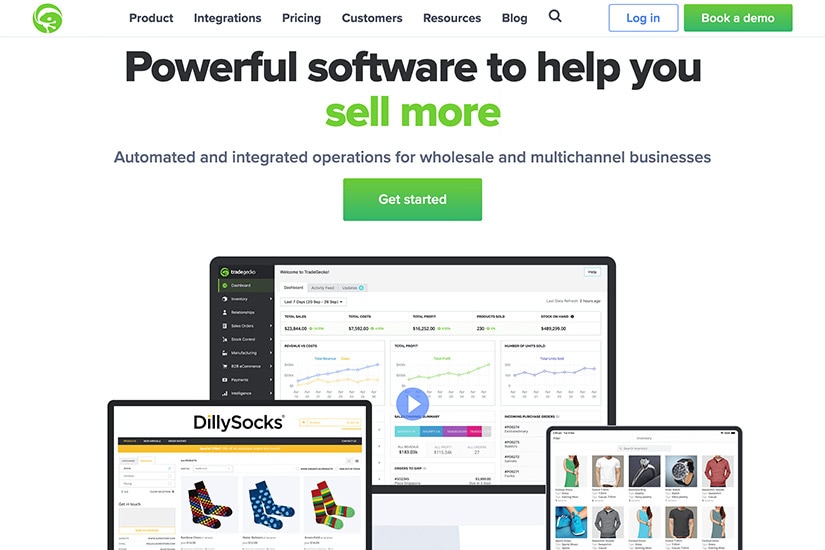
TradeGecko is a multi-channel inventory, production and order management solution for small and medium businesses. It’s perfect for online businesses as it is easily integrated with ecommerce store Shopify and accounting service QuickBooks (more on both below).
Pricing starts from $39 per month and they offer a 14-day free trial.
Other supplier and inventory management solutions worth exploring:
- ChannelApe: Connect multiple sales channels, vendors, and partners quickly and easily.
2. Payment infrastructure
Managing and processing payments is such a complex and expensive process to execute well that we recommend using a solution that is already integrated into your ecommerce platform. That will ensure the safety of your users’ information and the security of your transactions.
Best payment solution for online businesses: Shopify
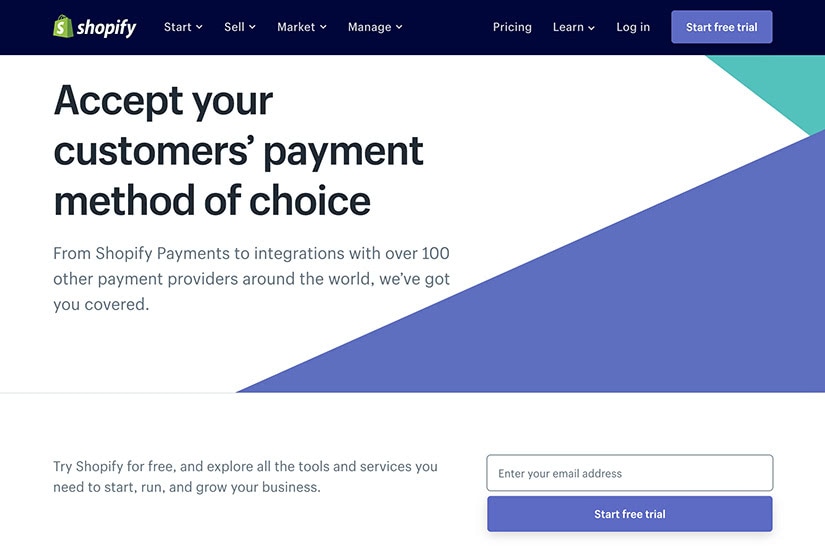
With Shopify’s integrated payment solution, you can instantly accept credit card payments for your online store. There is no need for additional third-party solutions. It’s the fastest and most secure way to start selling online.
Pricing starts from $29 per month and they offer a 90-day free trial.
3. Order fulfilment and product shipping solutions
Once your first orders start coming in, you need to quickly and efficiently process those orders and send goods to your customers. The logistics of order fulfilment and shipping can be very complex so our preferred solution is a software that integrates with the rest of your ecommerce to seamlessly transfer information.
Best order fulfilment and product shipping solution for online businesses: Fulfillrite
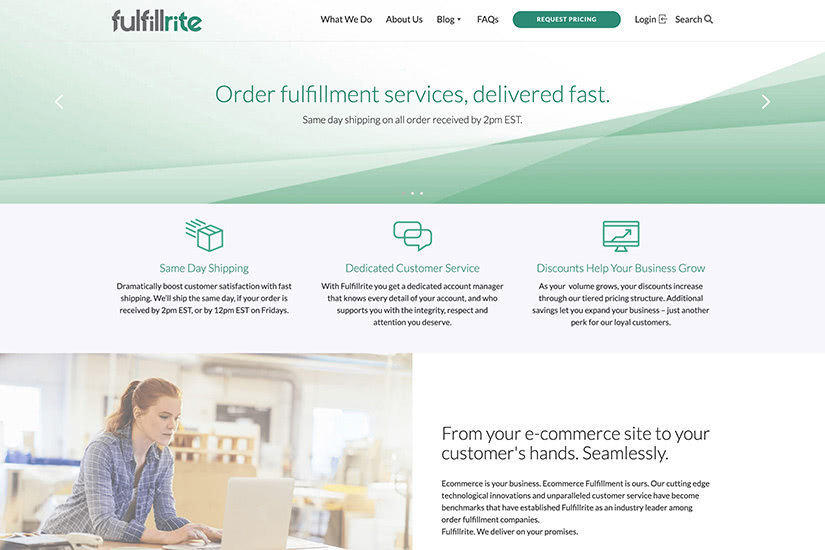
Fulfillrite will take care of picking products from your warehouse, packing them, and shipping them to your customers for you. They also manage returns and can ship the same day if your order arrives on time.
Pricing varies based on your requirements.
Other order fulfilment and product shipping solutions worth exploring:
- ShipBob: Provide same-day shipping for ecommerce companies of all sizes. They take care of storing, picking, packing, and shipping your products with simple, fast, and affordable order fulfilment services.
- Shippo: They’ll help you connect with USPS and DHL Express to get discounted rates.
4. Accounting and taxes software
The final important element to run your business operations efficiently is an accounting software that can seamlessly integrate with your other tools and platforms. It might not be the most glamorous aspect of ecommerce but it is essential to manage your finances.
Best accounting and taxes software for online businesses: Quickbooks
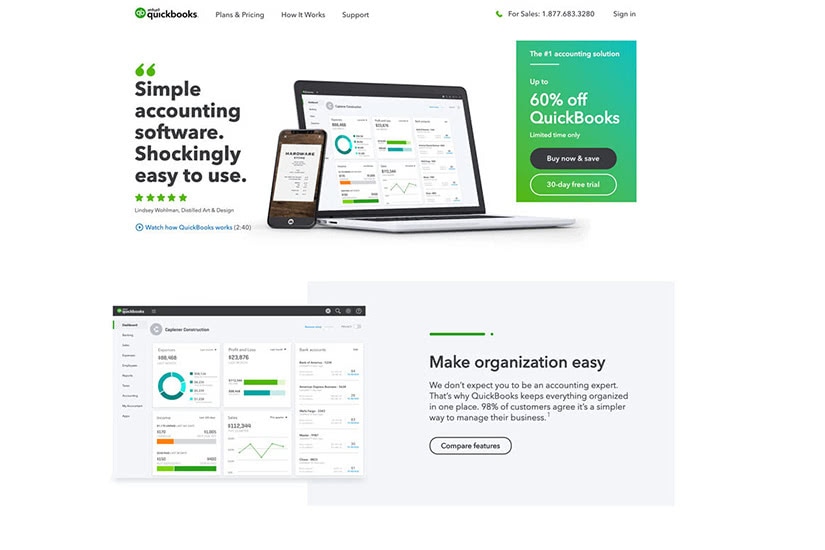
Quickbooks is easily the most widely used accounting service for digital entrepreneurs, especially online retailers. You can connect your bank account with the service to automatically import and categorise your transactions. It integrates with all the most popular ecommerce platforms, including Shopify, Magento and WordPress. And it includes a powerful invoicing system.
Pricing starts from $10 per month and they offer a 30-day free trial.
Other accounting software worth exploring:
- Xero: It’s another solid accounting software to manage your invoices and day-to-day financial operations. It also integrates seamlessly with Shopify to keep everything in sync.
Designing an inspiring brand system to build trust
Remember when we said above you should start by articulating your brand purpose and vision as part of your plan? It’s now time to execute your concept and design a brand identity for your business. This is the fun part!
Depending on your budget and design skills, you can do it yourself or hire a creative studio to do it for you. If you want to keep your expenses low, however, we found a few free DIY online tools.
Best free logo design for online businesses: Hatchful
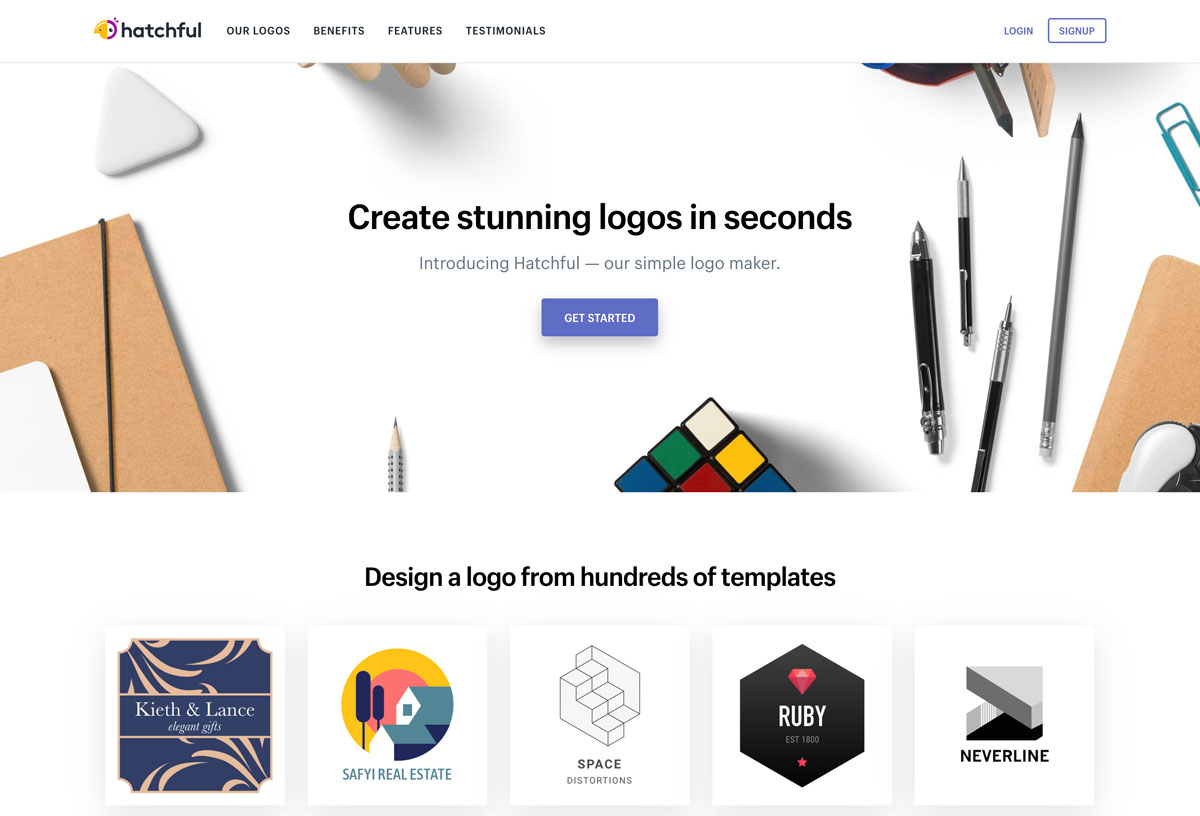
If you have more time and budget, you can also hire a professional designer on a platform such as 99designs.
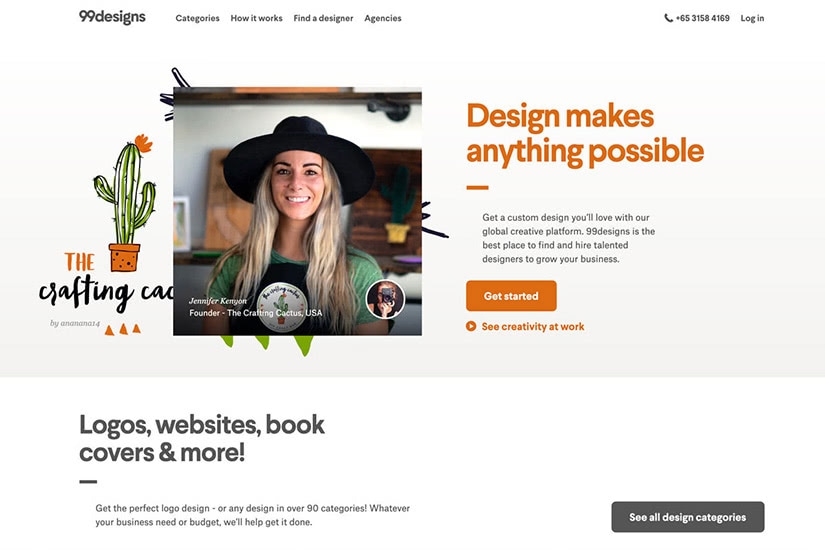
With 99designs, you can easily request designs from hundreds of freelance designers and only pay for the one you like.
Best free brand name generator to start an online business: Shopify name generator
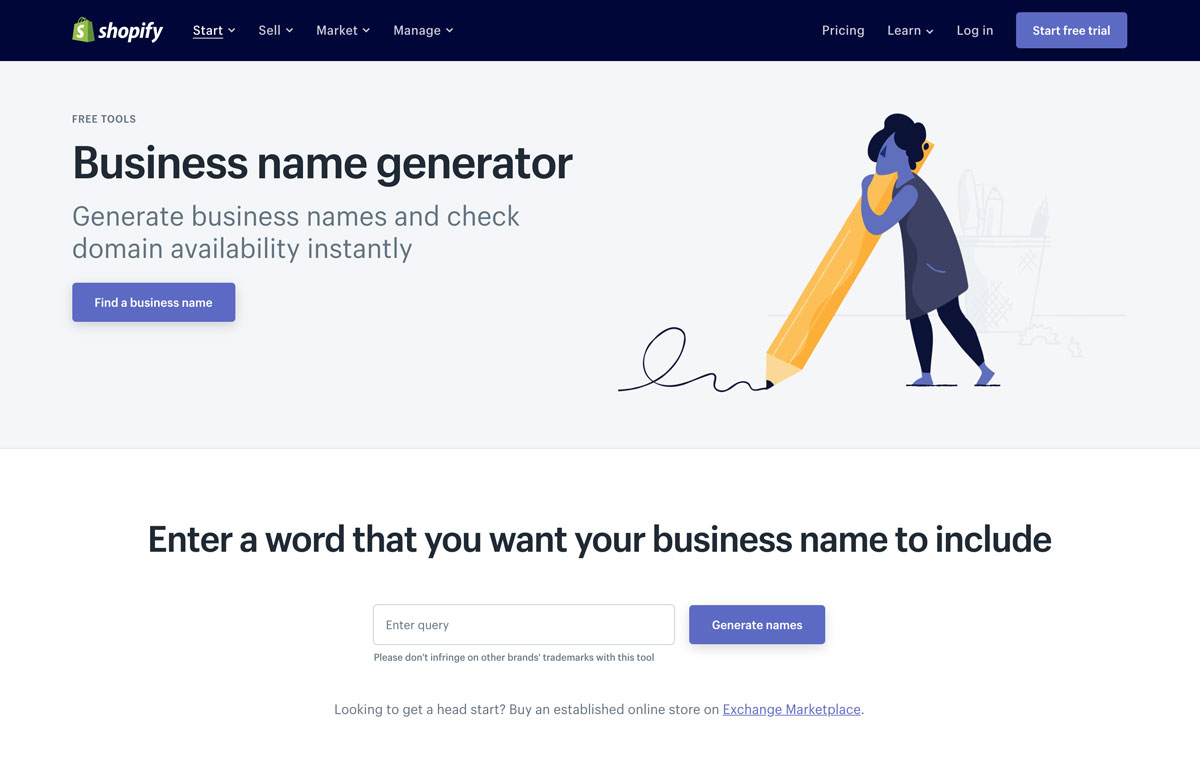
This free service from Shopify lets you easily find and create a unique brand name by suggesting word combinations. The free service also helps you quickly verify that your preferred business name is available as a domain for your website.
Start selling online: launch your digital store
Your business operations are in place and your initial branding is completed. You’re now ready to tie it all together with your very own website.
Your ecommerce site is the single most important aspect of your business. This is where customers will experience your brand and see your product. This is also where you’ll be able to sell and make money.
Think of your website as a traditional retail store. It needs to inspire and delight. But it also has to be trustworthy and easy to find and navigate.
There are two approaches that you can choose from to start selling online and set up your own ecommerce website.
The first option is to use platforms such as WordPress and Magento. The running expenses will be lower but the development and maintenance costs will be higher. Those are best reserved for people with sufficient time and technical know-how. Or you can decide to work with a digital agency to design and develop your site for you.
The second option is to use managed-ecommerce platforms such as Shopify and Squarespace. You’ll need to pay a monthly fee to use their services but you’ll be able to instantly launch a fully functional ecommerce platform with a secure payment gateway. You can also seek the guidance of a creative agency for a smooth implementation.
There is no bad option here, it really depends on your level of comfort with technology and the time that you have available to launch your online business.
From our experience, starting with Shopify is usually the best solution for new businesses. It enables you to rapidly get your product in front of your customers. You’ll make sales and collect invaluable customer feedback. You can always launch your own ecommerce website on WordPress with WooCommerce at a later stage if you want to.
While there are several ecommerce platforms available, such as Squarespace, BigCommerce, and Wix, Shopify is the fastest growing platform with the largest user base and community. That’s very important because you don’t want to create your business on a platform that might shut down in the near future.
Shopify is also very easy to use, with thousands of beautiful themes that you can customise to fit your brand. And it’s one of the least expensive platforms, starting from $29 per month, to launch your business online.
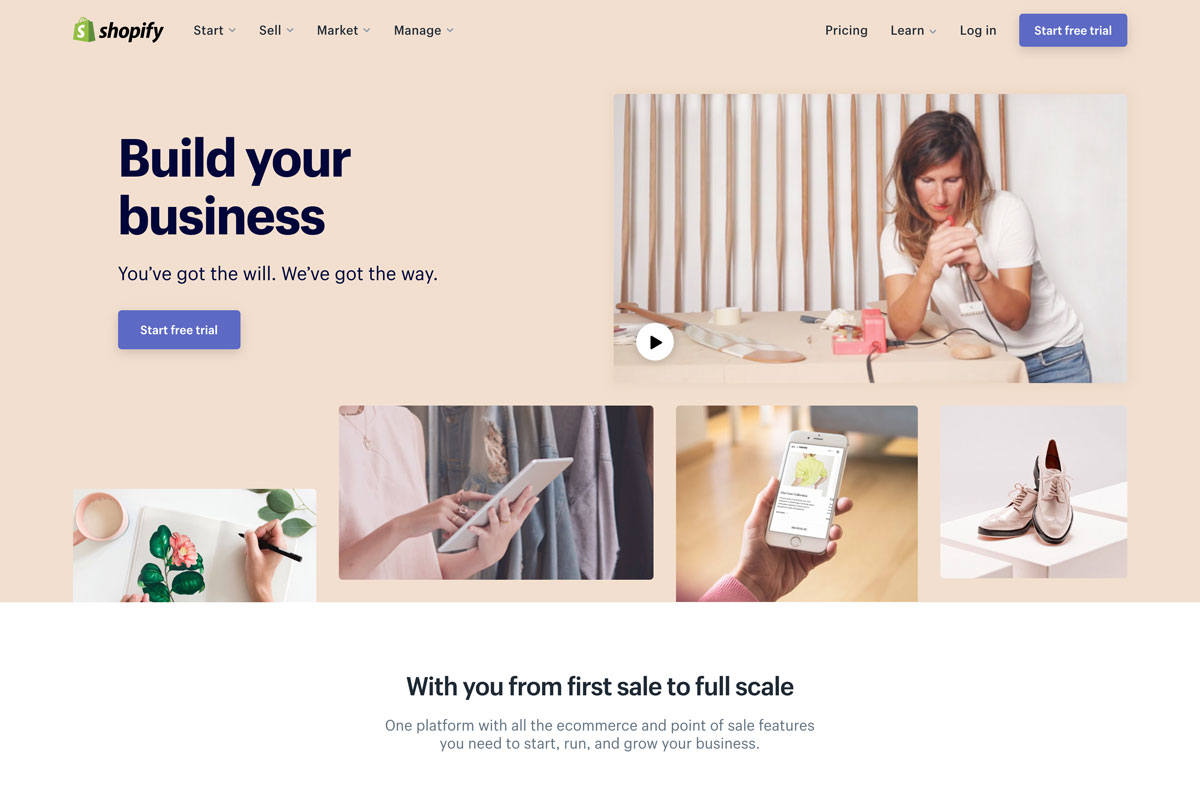
Most of these platforms offer a 14-day free trial, so you can sign up and compare the experience.
Pro tip: You can save 10% on all Shopify plans when you sign up for an annual plan.
To begin with your business online, you’ll need a domain name. This is the address of your website on the internet. It’s also what customers will see in the URL bar of their browser when visiting your website.
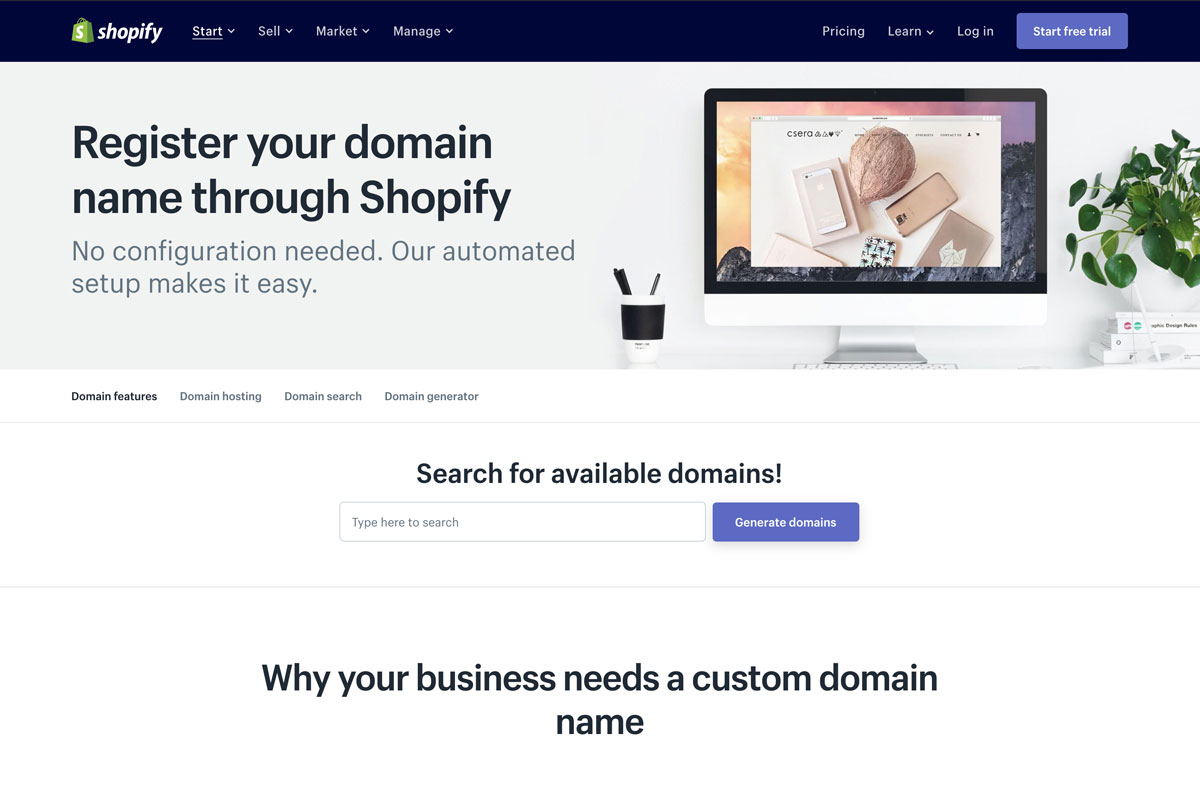
If you’re using Shopify, buying your domain name is very easy. The platform will help you set up everything automatically so you don’t have to worry about connecting your domain name with your host. You can keep your domain name for as long as you want, even if you decide to leave Shopify at a later stage.
Alternatively, you can use a domain registrar like GoDaddy to buy your domain name and then point it to your store on Shopify or anywhere else. GoDaddy is one of the least expensive and most stable domain name providers worldwide.
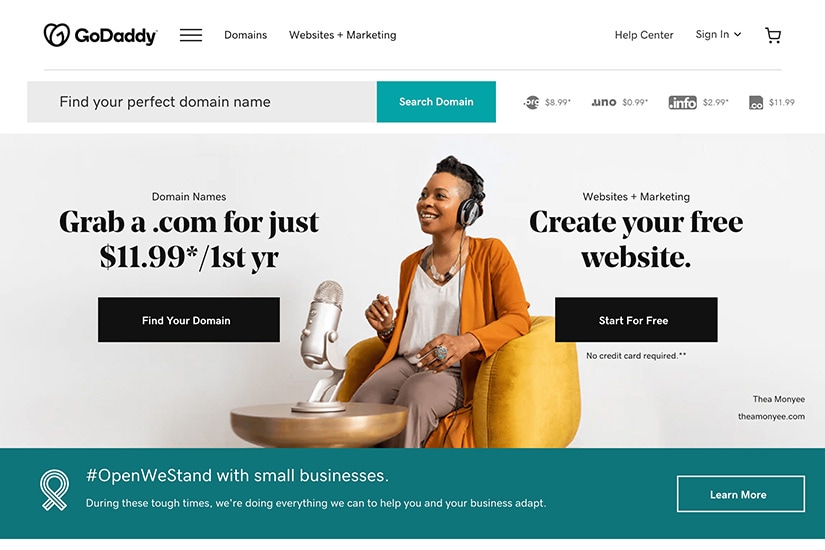
Buying a domain name on GoDaddy is quick and easy. You’ll just need to create an account and GoDaddy will help you find a domain name to match your business.
Once you’ve purchased your domain name, you’ll be able to point it to your website host.
Step 3: Grow your online business
Now that your website is online, you need to start driving traffic to it. It’s time to turn your attention to implementing your growth strategy!
In this section, you’ll see exactly how to increase traffic to your ecommerce website with online advertising, social media, content marketing, a newsletter and customer reviews. All these elements are essential to guarantee the sustainable success of your business online.
Keep in mind that you don’t need to do everything at once. In fact, you’ll drive more results by focusing your attention on mastering one marketing channel at a time. Once you have a good grasp of how that channel works and what it can do for your business, you can turn your attention to the next channel.
Online advertising: Promote your brand on Google and Facebook
Online advertising is the quickest way to start your ecommerce marketing strategy. Setting up your ad campaign on Google and Facebook takes just a few minutes and you can start from just $5 per month if you want. We recommend that you gradually increase your budget as you start to see positive results.
Direct to consumer advertising is an essential pillar of any online store. If you’re using Shopify, this step will be even easier to implement. Shopify comes with a built-in advertising platform called Kit. Kit helps you promote your store on Facebook and Instagram. It can also connect with your email marketing platform (more on that below).
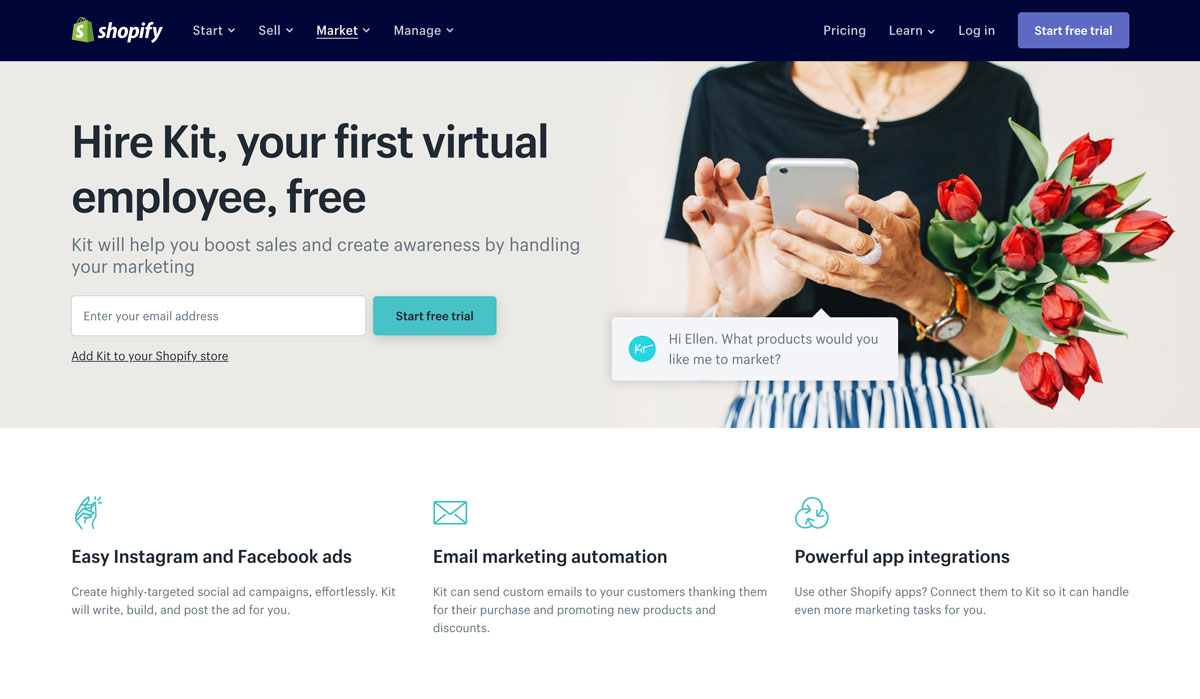
You can also expand the capabilities of Shopify Kit by taking advantage of the large ecosystem of apps available on the platform. As your online business grows and you gain more insights into your customers, these apps will help you amplify your advertising campaign.
Social media and influencer marketing: Increase your organic reach and engagement online
Social media and word of mouth marketing can be a powerful tool in your arsenal. While Facebook, Instagram, and Twitter don’t drive as much organic traffic to ecommerce as they used to, they are still important channels to build a community of brand fans. Pinterest, on the other hand, is increasingly growing as a social media platform that contributes to your traffic if you have the right content marketing strategy in place.
You should start by creating your social media profile on each platform. Once you’re ready to invest more resources behind your channels, it’s worth experimenting with influencer marketing.
Content marketing and SEO: Build brand authority in your market
If you want your online store to appear on Google and receive free organic traffic every month, you will have to invest time publishing interesting and original content. It’s called content marketing and it will have a significant impact on your business over the long run as part of your search engine optimisation strategy (SEO).
SEO is a broad and complex subject, so we recommend that you start by writing about what your customers care most about and how your product helps them resolve a particular problem. Our digital marketing agency can help you with that if you want. Just get in touch with us.
When writing, we love to use Grammarly to make sure that our copy is impactful and flawless. Grammarly is the smartest grammar checker around. It uses artificial intelligence to correct your errors but also recommends better ways to improve your writing style.
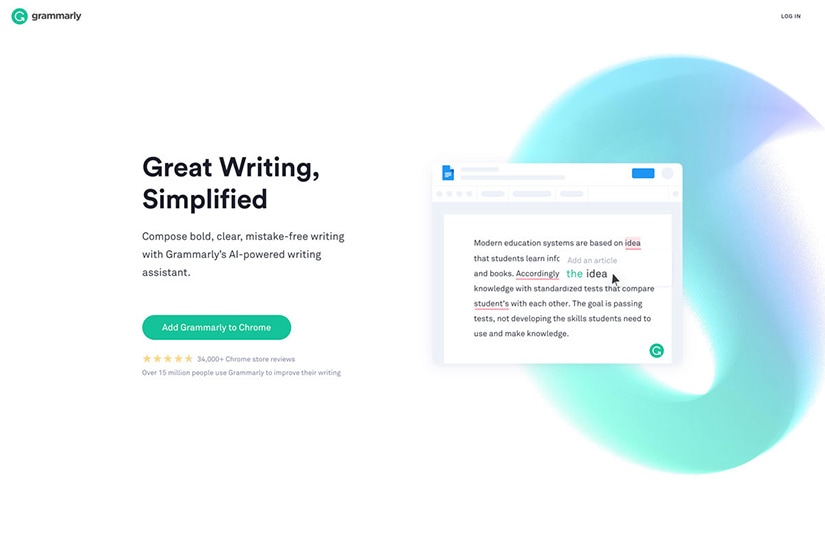
You can use Grammarly completely free if you want the basic version but we think that for $11 per month their premium version is absolutely worth it. It will help you find way more errors but also recommend better ways for you to write.
Consider investing in branded content and editorials published on high authority online publications such as Luxe Digital. Being featured among other high-quality brands in a premium environment will not only boost your brand awareness and reputation but also benefit your online visibility (and ultimately your ranking).
Newsletter: Build your own list of followers
Next on your list of ecommerce marketing opportunities should be to build your newsletter and email automation. Some level of email automation should be created from the very beginning when you set up your ecommerce store, even if it’s just to send a confirmation email after payment. More advanced integrations can be considered once you start to see sufficient traffic to your ecommerce store.
Owning your own email list will enable you to build up a new source of traffic as your store grows. This is the perfect complement to Google and social media to drive more people to your store when new products become available.
Depending on your technical expertise and the time that you have to run your email campaigns, you might find different tools to be a better fit for you. We recommend that you read this blog post listing the 9 best email marketing services for an ecommerce store to find the solution that’s best for you.
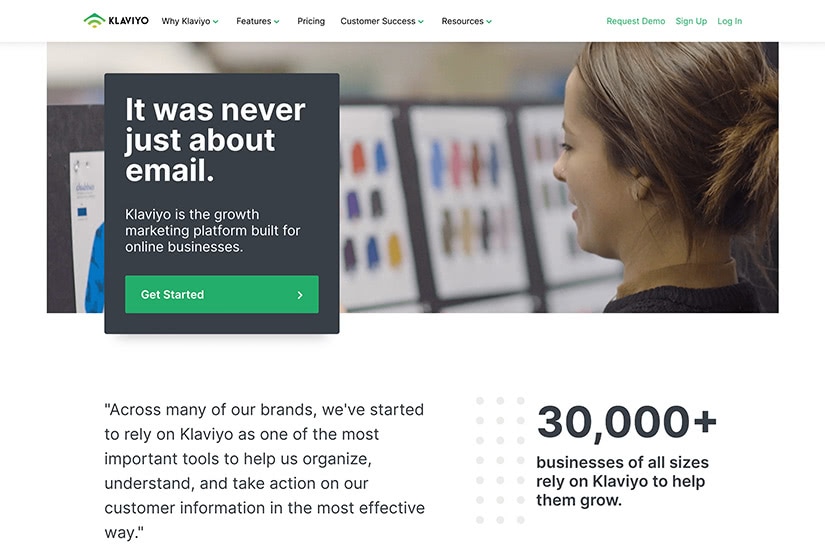
Klaviyo is one of the most powerful email marketing solutions for ecommerce merchants. Its segmentation tools can pull data directly from your store to personalise your email marketing campaigns.
Customer reviews: Build trust through social proof
The last step in your online marketing strategy is to collect genuine and valuable customer reviews. This is important for you to understand what your customers think of your products, of course. But also to display on your website or use in your social advertising as a powerful social proof and reassure future customers that they are making the right choice when buying from your store.
Our preferred tool to collect and manage your customer reviews, but also set up loyalty programs and referral programs, is Yotpo.
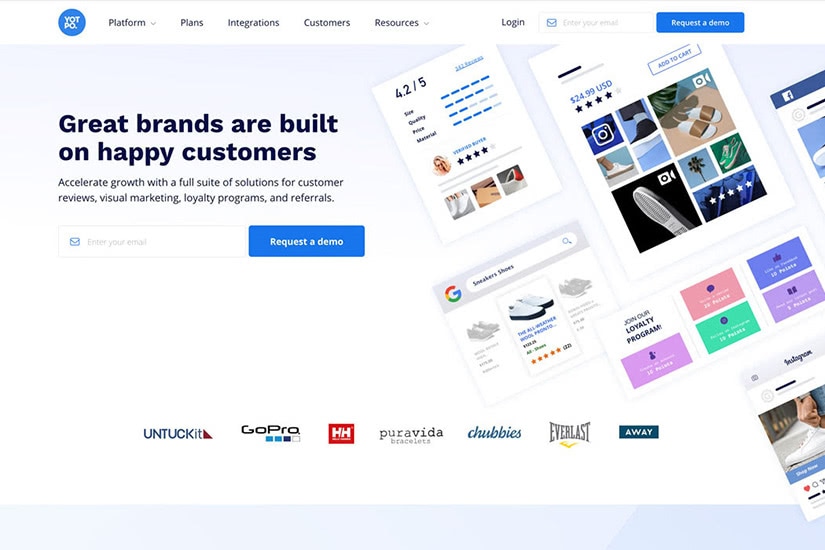
All-in-one UGC marketing platform collects and syndicates every type of customer content (reviews, Q&A, photos and more) to increase trust, social proof and sales.
You can start using Yotpo for free and only upgrade your plan if you need the advanced features at a later stage.
Step 4: Retain and delight your customers
The last step in starting your online business is to establish strong retention and customer support strategies. While less glamorous than customer acquisition and marketing, retention and support are essential. Fail at this stage and your brand can rapidly burst. Nothing goes viral online as easily as a bad customer experience.
You’ll see in this last step how to take advantage of customer relationship management tools to understand and personalise your customer experience. You’ll also discover the best customer support platform for an ecommerce store and the best website tracking and analytics service.
Customer relationship management for online businesses: Know your customers, personalise their experience
As your customer base increases, their interactions with your brand will become more fragmented. They might start their journey on their phone browsing through your Instagram feed while commuting, continue on their desktop by visiting your website, and finish it the following week by purchasing your product on their iPad. There is nothing more delightful for a customer than receiving timely and personalised recommendations throughout their journey.
A modern customer relationship management tool will enable you to do that. It can become a growth engine behind your business.
The undisputed winner in this category is Drip. Drip is an eCRM that seamlessly integrates with most ecommerce platforms to let you connect, engage, and relate to every customer on a personal level with smarter ecommerce marketing automation.

Best of all, Drip includes advanced reporting and analytics tools to help you quickly see which workflows, campaigns, and broadcast emails are making an impact with your customers in an easy to understand eCRM dashboard.
Pricing starts from $49 per month with a 14-day free trial.
Customer support: Every customer interaction is an opportunity to shine
Having an issue with something you recently bought online can be upsetting. Not being able to receive the appropriate support to resolve your issue even more so. Customer support is a critical operation to get right in your business. Fail here and your customers will share their negative experience with everyone (including potential customers) around them.
One of the most popular platforms to consistently deliver outstanding customer support across multiple channels is Zendesk. Zendesk helps you coordinate customer interactions across phone, chat, email, social media, and any other channel you might need, all in one place.
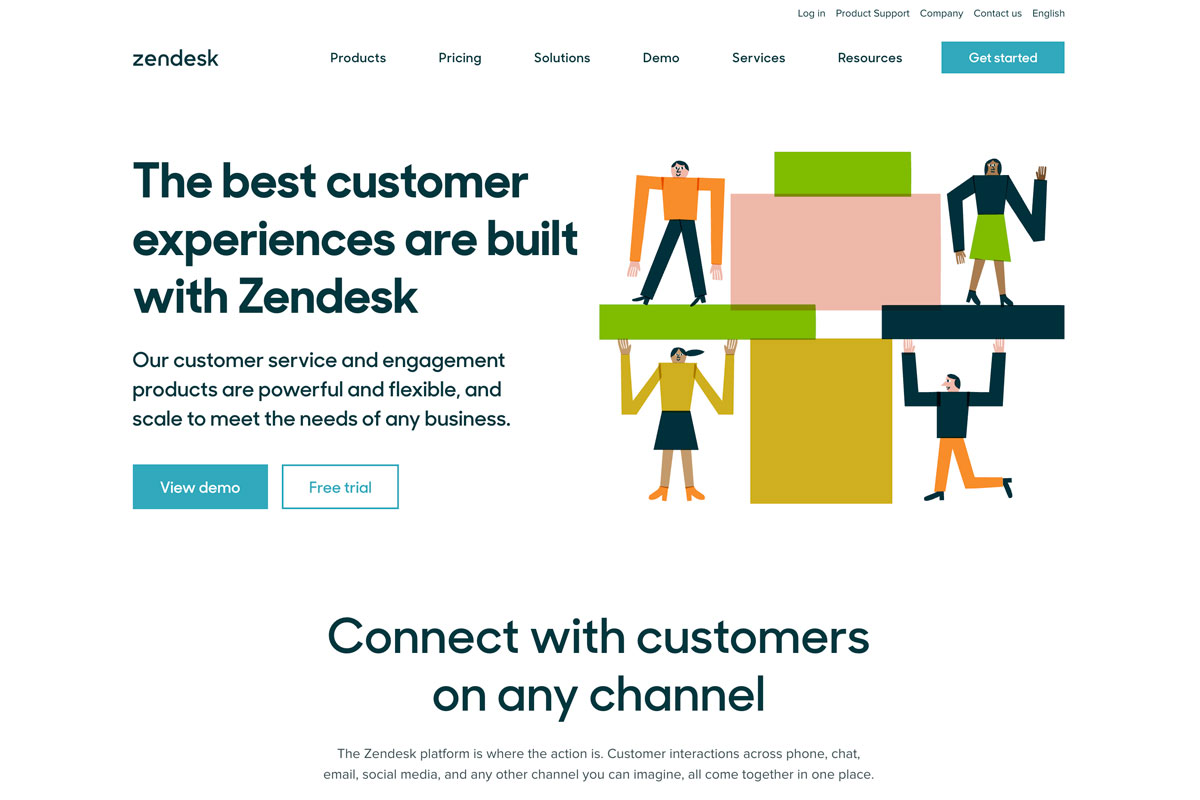
Zendesk shines in its simplicity and integration ease. Within a single platform, you can manage all customer support interactions and collect valuable insights to improve your business.
Price starts from just $5 per month per customer support agent and you can customise your package depending on the channels that you want to offer support in.
Analytics for ecommerce: Understand what drives your bottom line
The final building block to your online business is to set up a robust tracking and analytics dashboard. This will help you identify opportunities for growth, challenges, and make informed decisions based on data.
There are two main platforms that excel in this regard.
If you’re using Shopify, your ecommerce website already comes with a built-in tracking dashboard. Shopify’s analytics and reports give you the means to review your store’s recent activity, get insights into your visitors, and analyze your store’s transactions.
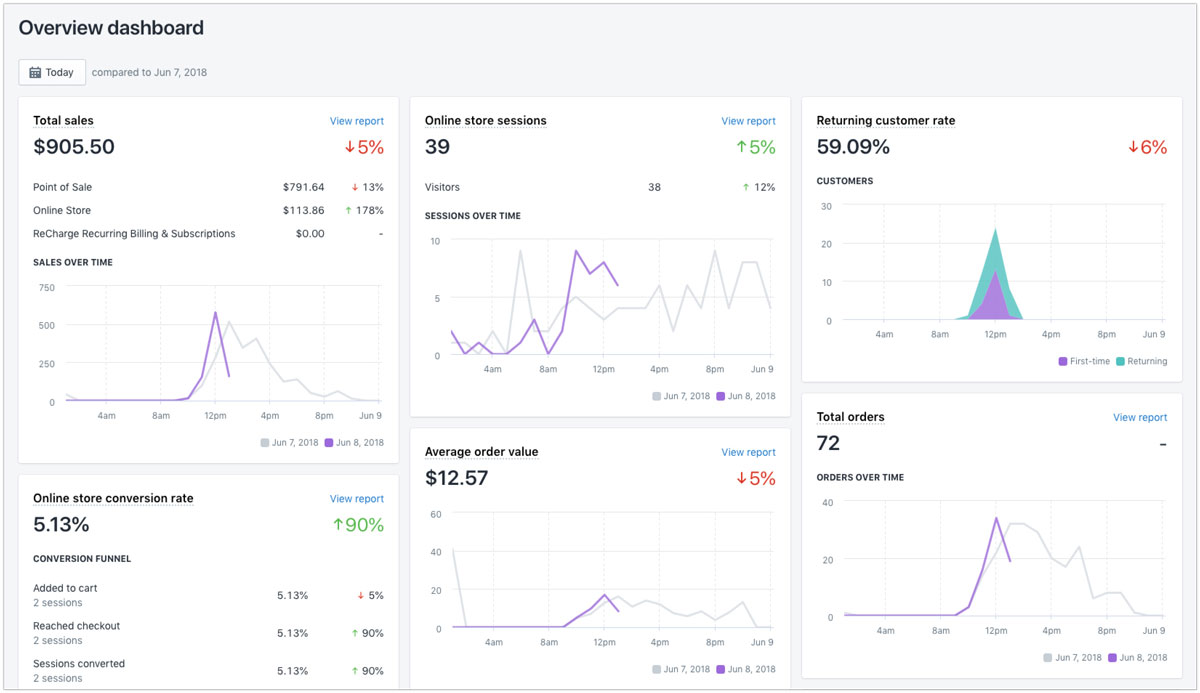
This solution will probably be sufficient for most people. But if you want to go further, you can also integrate your ecommerce store with Google Analytics, the market leader in website tracking. Google Analytics lets you track visitors, sessions, and other customer behaviours on your store. You can also set goals and event tracking to see exactly how your ecommerce is performing.
And best of all, Google Analytics is completely free.
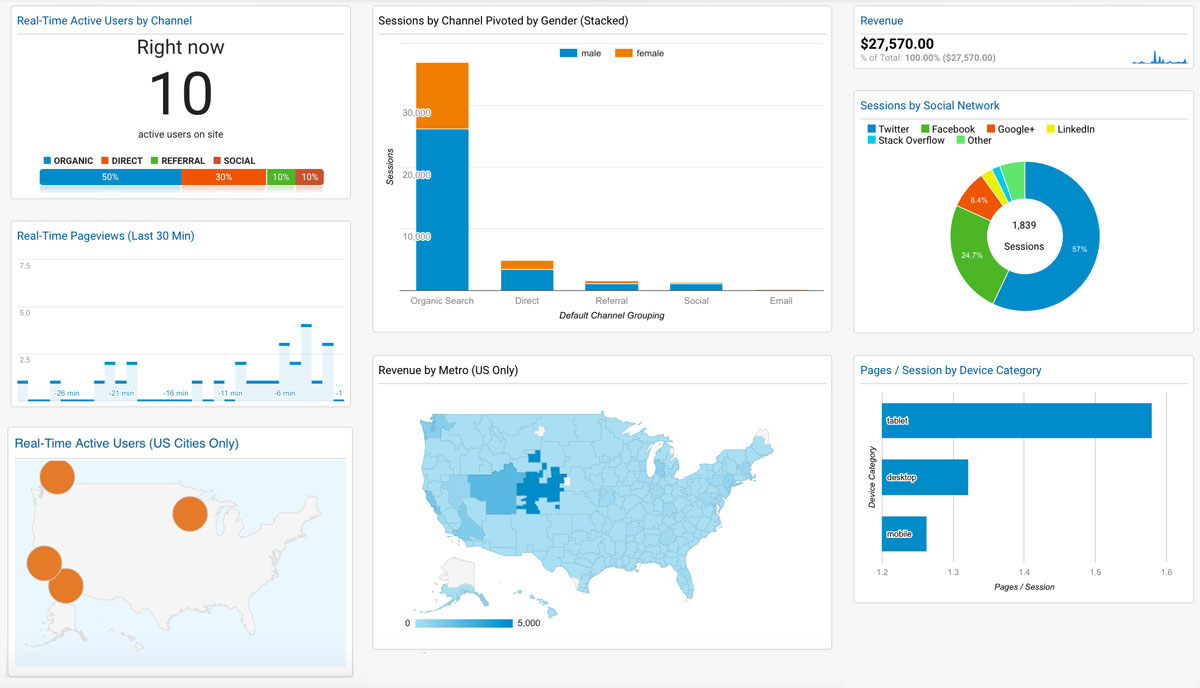
How much money do you need to start an online business?
Wondering how to launch an online business with no money? While starting your business online is much cheaper today than ever, there are still some costs associated with starting and operating a digital business. Based on our four steps guide, we estimate the minimal investment to be as follows:
| Item | Annual cost | Best option |
|---|---|---|
| Domain name | $12 | GoDaddy |
| Website | $348 | Shopify |
| Branding | $500 | 99designs |
| Inventory management | $468 | TradeGecko |
| Fulfilment partner | Percentage of your sales | Fulfillrite |
| Accounting | $120 | Quickbooks |
| Legal fees and registration | $300 | Varies |
| Advertising | $1200 | Multiple |
| Total | $2,950 |
Note that this is a rough budget estimation for a simple, DIY approach. Working with an agency to create a more polish and professional ecommerce business will cost you more.
Depending on your industry, you might have to invest more into branding, for example, to create a memorable and trustworthy brand. Your advertising costs are also very much dependent on how quickly you can identify your target audience to engage with them online. Legal fees and other costs associated with registering your online business will also vastly vary depending on the country you’re living in.
Launching an online business: Frequently asked questions
You can start your online business from home by following our 4 steps process. One of the best advantages of working online is that you can work from home or anywhere else in the world as long as you have a reliable internet connection.
To start your online business with no money, you’ll need to invest extra time and efforts to save on every little expense. It’s possible to start an online business for free today, but it will take you more time and you’ll face some level of limitations. The best solution is to invest at least $50 to buy your own domain name and a reliable internet host provider. If you’re a student, some companies also offer special rates and discounts to help you start your online business.
To find the kind of online business you should start, think about what you’re most passionate about and if there’s a problem that you could solve for other people. If you faced that problem, chances are that many other people did too. We have an entire guide listing the best ideas to start an online business. Take a look if you need inspiration.
The best online business to start at the moment are to sell a product or service online, to start a content website for advertising or affiliate marketing, or to offer online consulting services. Check our article on how to make money online for more ideas and suggestions.















